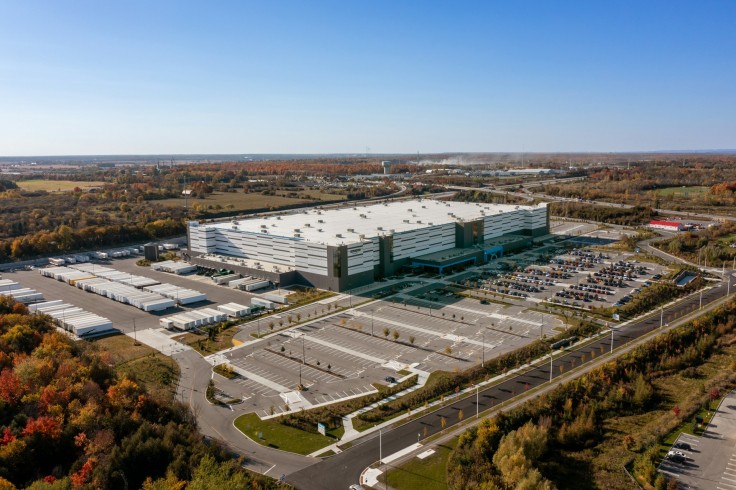The expansion of digital infrastructure across the United States is creating a ripple effect across multiple sectors, particularly in industrial real estate. As cloud computing, AI applications, and 5G networks continue to grow, the demand for large-scale data centers and supporting logistics has intensified. As noted by BluePrint Supply Chain, this demand is concentrated in key regions like Northern Virginia, Dallas, and Phoenix, where access to power, land, and network connectivity makes them ideal for development. Beyond the data centers themselves, the impact stretches into warehousing, workforce dynamics, and investment trends.
Growth of Data Centers in Key U.S. Regions
The demand for advanced digital infrastructure is fueling a steady rise in data center construction across the United States. Regions like Northern Virginia, Dallas, and Phoenix have become central hubs, offering access to power, land, and connectivity. These locations continue to see strong developer interest due to their ability to support large-scale facilities.
Cloud computing, artificial intelligence, and 5G networks are major drivers behind this surge. As tech companies expand their services, they require more physical space to house servers and networking systems. These trends show no signs of slowing, pushing sustained growth in select metro areas.
Connection Between Data Centers and Warehousing Needs
As new data centers break ground, the demand for adjacent warehousing space rises in tandem. These facilities play a critical role in storing the hardware, cooling systems, and backup power units that must be readily available during construction and ongoing operations. Without nearby warehousing, project timelines can suffer delays due to logistical bottlenecks.
Warehouses located within short distances of data center campuses are often stocked with racks, fiber optic components, and high-density cabling. Having quick access to these materials ensures smoother installations and faster response times for maintenance teams. In high-demand areas, developers are beginning to pre-lease warehouse space even before breaking ground on the data center.
Regional Trends in Warehouse Demand
Markets experiencing heavy data center expansion are also seeing a spike in warehouse leasing activity. In areas like Northern Virginia's Data Center Alley, vacancy rates for industrial space remain at historic lows while asking rents continue to climb. Developers are racing to meet the growing need for storage and logistics support. In response, some landlords are repurposing existing structures to accommodate tech infrastructure storage.
In Arizona and parts of Texas, the surge in data infrastructure has created ripple effects across nearby industrial zones. Warehousing demand has intensified, prompting a wave of speculative development to keep pace. As long as data center growth persists, these warehouse trends are expected to follow closely behind. This pattern is becoming a reliable signal for where the next wave of industrial investment might land.
Effects on Logistics and Workforce
The rapid rise of data centers has intensified pressure on local logistics networks. Delivery schedules have become tighter, with suppliers needing to fulfill just-in-time shipments for everything from electrical panels to HVAC systems. This heightened pace is forcing transportation firms to adapt quickly or risk losing contracts. Some are adopting advanced tracking systems to improve delivery accuracy and timing.
Alongside logistics, the labor market is experiencing a shift. Skilled workers with experience in inventory management, equipment handling, and supply chain coordination are increasingly in demand. Some regions have begun investing in training programs to address the widening talent gap and ensure a steady flow of qualified personnel.
Changes in Warehouse Designs and Placement
Traditional warehouse models are shifting to meet the demands of tech-driven infrastructure. Facilities now require higher ceilings, enhanced security systems, and the capacity to handle sensitive equipment. This shift is leading to more specialized builds, often tailored to support the lifecycle of data center components.
Location has become a critical factor. Proximity to both data centers and major transportation corridors is essential, pushing developers to scout land near highways, fiber routes, and power substations. Zoning flexibility and local government cooperation also play key roles in determining where these new warehouses take shape.
Implications for Real Estate Developers and Investors
The convergence of digital infrastructure and industrial real estate is creating new opportunities for long-term growth. Investors are increasingly targeting regions where data center development is strong, seeing these locations as stable bets for warehouse-related assets. The synergy between tech expansion and real estate is drawing attention from institutional capital.
For developers, the challenge lies in anticipating future needs. Those who can align warehouse offerings with the evolving demands of data infrastructure are positioning themselves for sustained returns. Markets that once centered around retail logistics are now being redefined by the digital economy's physical footprint.










